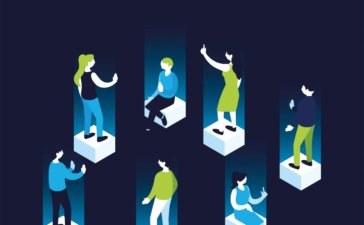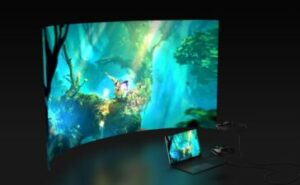Video games have been blamed for sedentary lifestyles and social problems since early arcade games hit the streets in the 1970s. Throughout my career, from post-doctoral research to the company boardroom, I have made it my mission to change that perception and truly bring physical activity into the gaming industry.
The recipe is simple: By fully utilizing the capabilities of mixed reality technologies, we can make active, social, and fun gaming experiences that reward exercise. Combining the benefits of an active lifestyle with everything we love about video games, we can finally bury all the negative stereotypes for good.
The Pandemic Glued Us to the Couch
The COVID-19 pandemic was a tough time for many. A study by WHO found that the global prevalence of anxiety and depression increased by 25%. Especially young people found themselves cut off from their social networks. At the same time, interest in gaming skyrocketed.
When we were stuck in our houses, playing video games became one of few ways to spend time with friends and family. Studies undertaken after the pandemic show that people who played augmented reality games like Pokémon Go or Harry Potter: Wizards Unite were less likely to develop anxiety and depression. Another study showed that young people who played online games coped better with anxiety, depression, and stress related to lockdown measures.
Many of our gaming habits have stuck with us after restrictions were lifted. In the US, 56% of male and 47% of female respondents to a recent survey said they play video games as often as they did during the pandemic. Safe to say, gaming is here to stay.
Active Games Make People Active
While games are more popular than ever, we are facing another problem: Sitting down is the new pandemic. As much as 80% of the global underage population does not get enough weekly exercise. The average American sits more than 6.5 hours daily, and it’s even worse in the UK at over 9 hours. Yet we have to acknowledge that going for a run or to the gym is not for everyone. To include more people, we have to rethink what exercise could be.
Gamified exercise is the key. Active games have been around for a long time and are growing in popularity. The first dancing game with a floor pad launched in 1987, and by the late 90s, they were a feature at every arcade. All major consoles have featured active games since Playstation 2’s EyeToy. Yet, these games all share the same issue: they are primarily for one or two players, and the experience relies heavily on factors like additional controllers, having a good TV, or enough space in the living room.
Pokémon Go took on this challenge and made active gaming accessible. Players have to move around to progress and so they had no other choice than to take the dog for a walk or go to the park. Data from 2017 showed the number of active players that walked more than 10,000 steps per day had increased from 15% to 28% since the game launched. Using AR technology and mobile phones, inserting the game directly into the player’s surroundings made the gaming experience feel real.
So how do we build on the success of Pokémon Go? For me, the digitalization of theme parks, arcades, and activity centers, provides a fantastic opportunity to introduce MR active games to larger groups. Using immersive technology, we can create fun and challenging group gaming experiences that could never fit in our living rooms.
Active Games Are Social Arenas
Video games are social, and creating social games is also what MR systems do best. New, immersive, digital attractions are a great social way to inspire competition and get people moving. Friends can work out together, and you are free to move around in the game arena. Competing against real people in a mixed reality space where they can see, hear, touch, and talk to each other while playing takes the gaming experience to the next level.
As a social arena, gearless MR games have an advantage over their equipment-based VR cousins. By removing the need for mobile phones or headwear, we can create games that let you stay connected with your fellow players in the real world. The game truly becomes a challenge you face together. The sense of jeopardy is real, as are the interactions you have with other players.
MR technology also lets us create new, gamified activities for traditional sports venues such as gyms or climbing centers. By boosting the spread of MR gaming experiences, we can introduce healthy activity to more people and promote healthy living. I can think of no better use of technology.
Guest Post



